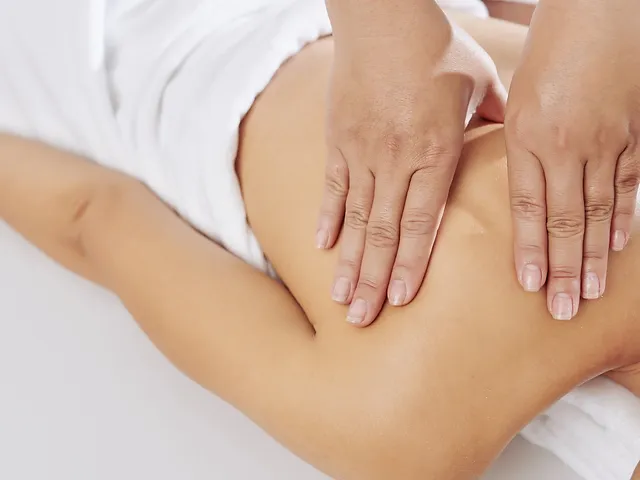This thorough guide will teach you the techniques and advantages of deep tissue massage. Find out how this therapy can ease stress and encourage well-being.
A deep tissue massage is a therapeutic approach that relieves chronic pain, eases tense muscles, and encourages relaxation by working on the deeper layers of connective tissue and muscles. This massage technique, which is well-known for its effectiveness in treating particular muscle problems, goes deeper than simple relaxation to address the underlying causes of chronic pain and provide long-lasting relief. We will explore the methods, advantages, and concerns related to deep tissue massage in this comprehensive guide.
Understanding Deep Tissue Massage
Deep tissue massage uses slower, firmer strokes to reach the deeper layers of muscle and fascia, in contrast to Swedish massage’s softer strokes. The main objective is to release adhesions, which are bands of stiff tissue that impede movement and cause pain and inflammation. In order to apply pressure and release tension, the therapist may use their forearms, elbows, knuckles, or even specialized tools.
Techniques Involved
The therapist applies deep, gliding pressure along the length of the muscle fibers using their thumbs, knuckles, or elbows.
Friction: To release adhesions and realign tissue fibers, friction is the application of pressure across the muscle’s grain.
Trigger Point Therapy: To relieve pain and release knots, specific points of tension are targeted.
Stretching: Stretching aids in improving flexibility and elongating muscles when combined with massage.
Benefits of Deep Tissue Massage
Pain relief
Reduces persistent pain, particularly in the legs, lower back, shoulders, and neck.
Enhanced Mobility
Promotes range of motion and relaxes tense muscles.
Stress Reduction
Assists in lowering stress hormones, encouraging relaxation, and relieving tension.
Injury Rehabilitation
Promotes blood circulation and breaks down scar tissue to aid in the rehabilitation of injuries.
Postural Improvement
By addressing muscular imbalances, this technique aids in posture correction.
What to Expect During a Deep Tissue Massage
Dialogue is essential. It’s critical to let the therapist know how comfortable you are. The pressure exerted may cause some discomfort, but it shouldn’t be excruciatingly painful. The therapist will consider your input and modify the pressure as necessary.
Precautions and Considerations
Pain Following the Massage
Because of the deep pressure used in the massage, it’s normal to experience soreness for a day or two afterward.
Hydration
To help flush out toxins released during the massage drink a lot of water afterward.
Consultation
Before deciding to get a deep tissue massage, see a healthcare provider if you have any medical conditions or concerns.
Conclusion
Incorporate deep tissue massage into your wellness regimen; this is particularly beneficial if you struggle with persistent pain or tense muscles. But it’s important to approach it with the right information and comprehension. Through an understanding of its methods, advantages, and possible drawbacks, you can maximize this therapeutic approach to improve your general health.
In conclusion, deep tissue massage targets specific muscle problems to produce targeted relief. Including this modality in your wellness regimen can result in significant gains in general health and physical comfort.
Recall that deep tissue massage is a valuable therapeutic option that can lead to a more pain-free, flexible, and relaxed lifestyle when seeking deep muscular relief and relaxation.



